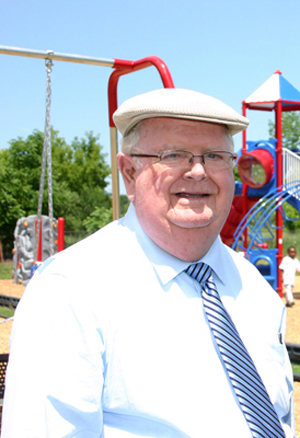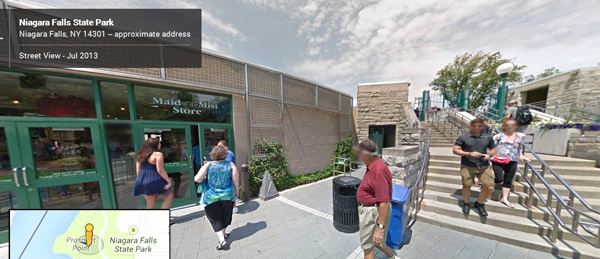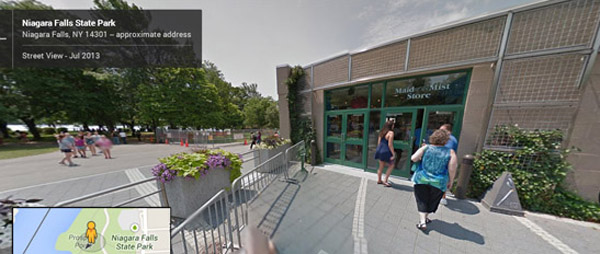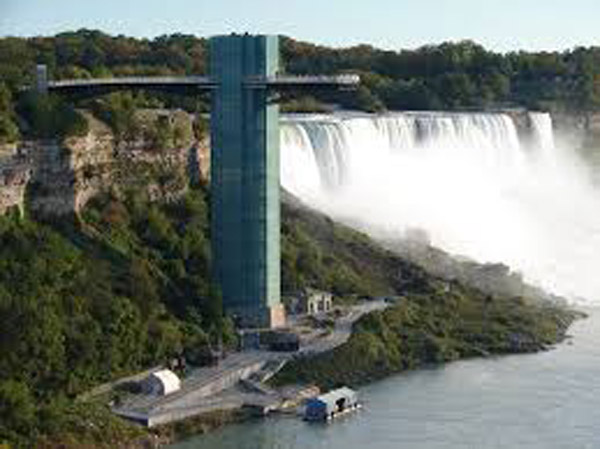 |
|
It is no exaggeration to say that James V. Glynn owns Niagara Falls State Park.
|
|
|
At the Niagara Falls State Park, one man gets half, or slightly more than half, the total revenues from all sources combined.
He is Lewiston businessman James V. Glynn.
The Niagara Falls State Park is, according to its own claims, the most popular state park in the USA with an estimated eight million visitors per year.
Glynn has three seasonal businesses inside the bustling, summertime-oriented park.
His main one, of course, is boat tours.
He has exclusive rights to operate the Maid of the Mist, the park’s single biggest attraction, and has had this, without facing competitive bidding, for 44 years.
Last year Gov. Andrew Cuomo extended his lease for another 30 years, making it 74 years, a monopoly that other companies would be glad to bid on.
The lucrative concession attracted Hornblower Cruises, the largest boat tour company in North America, who offered to pay $100 million more- that's $3 million more per year - than Glynn to New York State.
Cuomo said the state wasn’t interested in the extra $100 million.
 |
|
As visitors return from the Maid of the Mist, or even from the Observation Deck, they are required to exit through Glynn 's Maid of the Mist Souvenir Store, unless of course they want to hop the fence.
|
|
|

In addition to Glynn's boats, he has the exclusive rights to operate (and keep 75 percent of the income) the state-owned Observation Deck which, by extending out beyond the gorge walls, affords the fullest view of the horseshoe falls on the U. S. side and the only view inside the park of the front of the American falls.
When Glynn got the deck in 2002 from the state park, it came with the longest lease in state park history, 40 years.
It was also in 2002 that the state built a large souvenir store inside the park, next to the entrance to Glynn’s boat tours and the observation deck and, without competitive bidding, made Glynn the sole tenant for the store for 40 years, at a rent of 10 percent of sales, about one third of what nearby competitors pay.
The three businesses will bring Glynn an estimated $13.8 million this year -- according to Glynn's lease projections filed with the state.
For all three enterprises, Glynn will pay the state only $1.5 million and keep $12.2 million.
To get an idea how low the rent of $1.5 million is for these three businesses, consider Hornblower, on the Canadian side, pays the Ontario Niagara Parks Commission more than $10 million for his boat tours alone.
Based on an analysis by the Niagara Falls Reporter of studies made by USA Niagara, Niagara University, the Niagara Tourism and Convention Corp, and reports and leases on file with the New York State Office of Parks, Recreation and Historic Preservation, we estimate that, thanks to his low rents, Glynn takes in a higher adjusted gross revenue (total earnings minus rent) than the rest of the park combined.
All other (non-Glynn) enterprises in the park -- such as paid parking, Cave of the Winds, Delaware North's souvenir and restaurant concessions, the trolley, and Adventure Theater -- earn an estimated $11 million.
Total revenues from all sources, therefore, for the entire Niagara Falls State Park are estimated to be around $23 million.
Glynn's $12.2 million is 53 percent.
Glynn gets around half of the revenue from the oldest and most visited state park in the nation, the park, in effect designed as a business model, with Glynn as the majority stockholder.
Over the years, both park and elected officials have helped Glynn achieve this remarkable business success on public land.
In 2002, after building him a souvenir store, and granting him the lion's share of the profits on the newly rebuilt Observation Deck, they lowered his boat tour rent from 10 percent to 4 percent, a fact unknown to the public until 2010 when the Reporter first published this fact.
(In contrast to Glynn's four percent of boat tour sales, Hornblower in Canada pays more than 25 percent.)
In 2012, after Glynn lost the Canadian lease, Gov. Andrew Cuomo refused to permit other companies to bid in New York. While Cuomo did raise Glynn's boat rents to (a still comparatively low) eight percent (Hornblower pays 25 percent), Cuomo also arranged for new winter dry docks (something Glynn lost in Canada when he lost the Canadian lease in 2012). The new docks were built on state land at the site of the old Schoellkopf power plant.
Even the park itself is managed to maximize Glynn's profits.
After visitors ride the Maid of the Mist boat, or visit the Observation Deck, they are required to exit through Glynn's souvenir store.
In fact, since Glynn runs it, the observation deck is only open during daylight hours, the same hours Glynn's boat tours and souvenirs store are operational. Despite the fact that, if the observation deck was open at night, visitors could see the best American view of the illumination, Glynn chooses to close the deck when he closes his souvenir store depriving the public of a nighttime view that rivals Canada's best views.
During the day, especially during the peak times of the summer season, the lines for the boat tour are oppressive. For tens of thousands of tourists, their lasting impression of the Niagara Falls State Park is that there is a three-hour wait in the hot sun for the 15-minute Glynn boat ride. Then another 30 minute wait, after the boat ride, to take elevators to get back up.
Once back at the top of the gorge, tourists again wait, since they can’t get back out to the park and freedom (from Glynn) until after they are herded through his souvenir store.
In 1885, Frederick Law Olmsted persuaded the New York State Legislature to reserve land around the falls, which became the Niagara Falls State Park.
Olmsted planned to keep the park all-green and free of businesses. In fact, Olmsted called the prohibition of businesses "a cardinal necessity of the plan."
Today it is a business with Glynn taking the hindermost.
There was, also, according to Olmsted's plan, to be no parking, since "many trees must be destroyed."
For decades, at least prior to 1987, people who came by car to visit the Niagara Falls State Park therefore had to park in the city and consequently they patronized shops there.
Unless they were physically handicapped (there were about 50 handicap parking spaces inside the park and that's all) able bodied people had to park in the city and walk some several hundred yards to take the Maid of the Mist boat tour.
One-hundred-years after Olmsted, and 15 years after Glynn got his boat tours, park officials suddenly felt an urge to clear cut acres of century-old trees to make a new, giant parking lot near the Maid of the Mist.
The state altered Olmsted's plan, the city lost millions in tourism, but Glynn got the benefit of a parking lot near his attraction.
At the end of the day, as important as Olmsted was to the history of the Niagara Falls State Park, so is Glynn. Glynn tipped the scale. It is to be recorded in the pages of history, that he is the man who changed the park model from "Olmsted" reservation to an aggressive business model.
It went from a park to a lucrative boat tour, parking, souvenir and restaurant business -- increasingly in competition with the city.
Glynn achieved brilliance without wisdom, power without conscience. One man, through persuading elected officials to do his bidding, superseded the perpetually uninformed and voiceless people of New York State.
Inside the park, Glynn is royalty, the millionaire among middle range state officials, underpaid state park employees and easily bought elected officials.
From his first, small foothold in the park, gained through hard work as an assistant for the previous boat tour owners, snagged in 1971, he transformed a modest boat tour business into almost total control of the park and in so doing transformed himself (and the park) into a financial giant and an ethical infant.
The city has declined in almost direct proportion to his fabulous rise in wealth and power.
 |
|
Somehow the state thought it wise to turn over total control to the stateowned Observation Deck to Glynn, who operates it solely for his convenience while he scarfs up 75 percent of the revenue. The selfish plan to not open it at night, so that it is only open during the hours his souvenir store is open has deprived US tourists from seeing the best nighttime views of the illumination of the falls.
|
|
|
|




